One of the hottest biodiversity hotspots among the 34 recognised landscapes across the world. The mighty Sahyadri mountain range popularly known as the Western Ghats is rather a great escarpment which according to several geologists believed to be an eroded edge of the Deccan Plateau that runs almost parallel to the west coast of India.
Spread over approximately 160,000 square km, Western Ghats form the catchment area for numerous rivers that drain almost 40% of India.
Western Ghats have diverse habitats teeming with lifeforms, that include 7,402 species of flowering plants, 1,814 species of non-flowering plants, 139 species of mammals, 508 species of birds, 227 species of reptiles, 179 species of amphibians and 290 species of freshwater fishes. Along with the species richness this landscape has high endemism earning it the title of UNESCO
Natural World Heritage Site. Out of all documented species nearly 38 percent of plants, 16 mammals, 21 birds, 97 reptiles, 143 amphibians, 118 fishes are endemic to the Western Ghats. The tropical rainforests are the richest in biodiversity among all other forest types found in this landscape.
Here are some of those fascinating endemic creatures which we find on our expeditions:
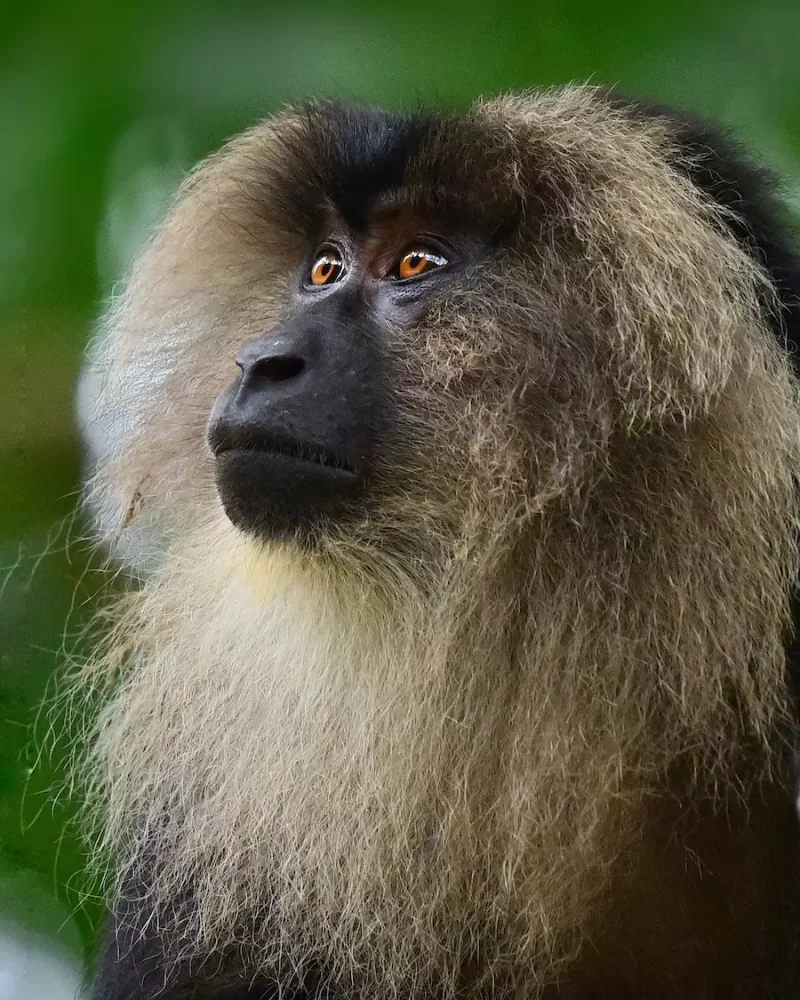
Lion-tailed macaque (Macaca silenus):
Found only in moist evergreen forests of the Western Ghats this is an
endangered species with patchy distribution of less than 3500 individuals due to fragmentation and habitat loss. With impressively large canines and long white mane, the males appear ferocious. However, they are quite docile and often
dominated by the smaller aggressive species like the Bonnet macaques. Primarily frugivorous, Lion-tailed macaques prefer to live up in the canopy, away from
humans.
Malabar Slender Loris (Loris lydekkerianus malabaricus):
Weighing just between 250 to 275 gm, this cutie is the smallest primate of India. It is a nocturnal creature, that prefers to sleep peacefully in tree hollows and dense thickets, where it can stay safe from predators. It cannot hop from tree to tree, and appears to be slow moving. However, it can disappear in no time when threatened. This endangered animal is entirely arboreal and prefers not to come down to the ground unless forced to do so due to heavy fragmentation of
the habitat. Malabar slender loris is a subspecies of gray slender loris which is found only in central Western Ghats.
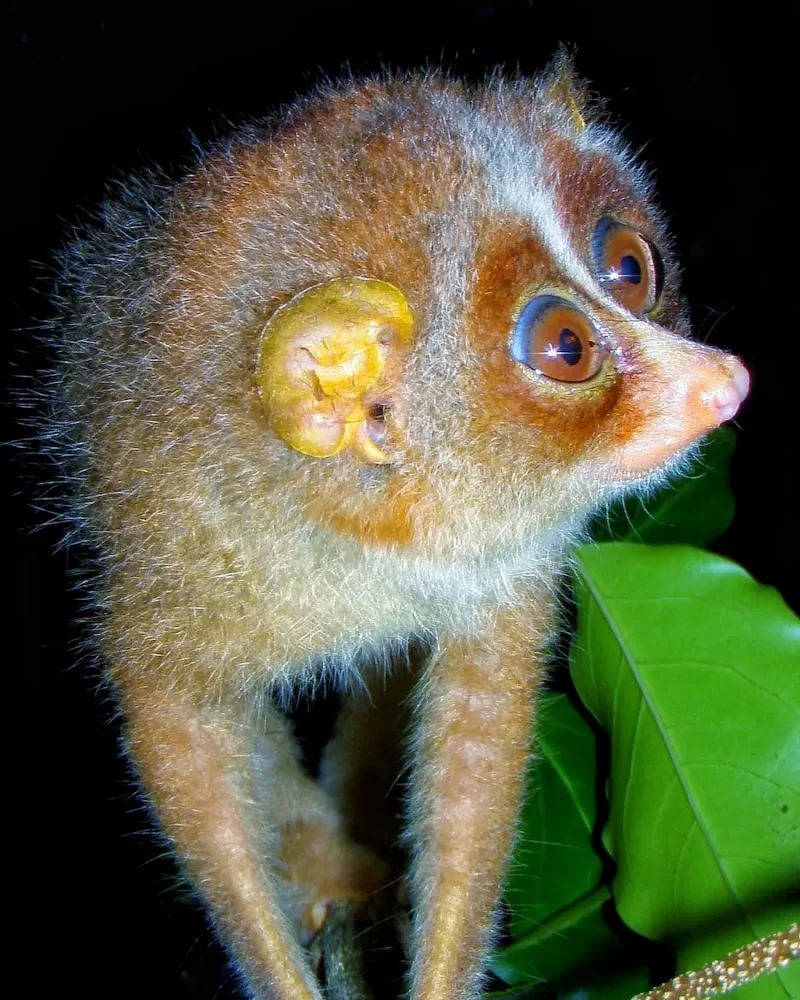
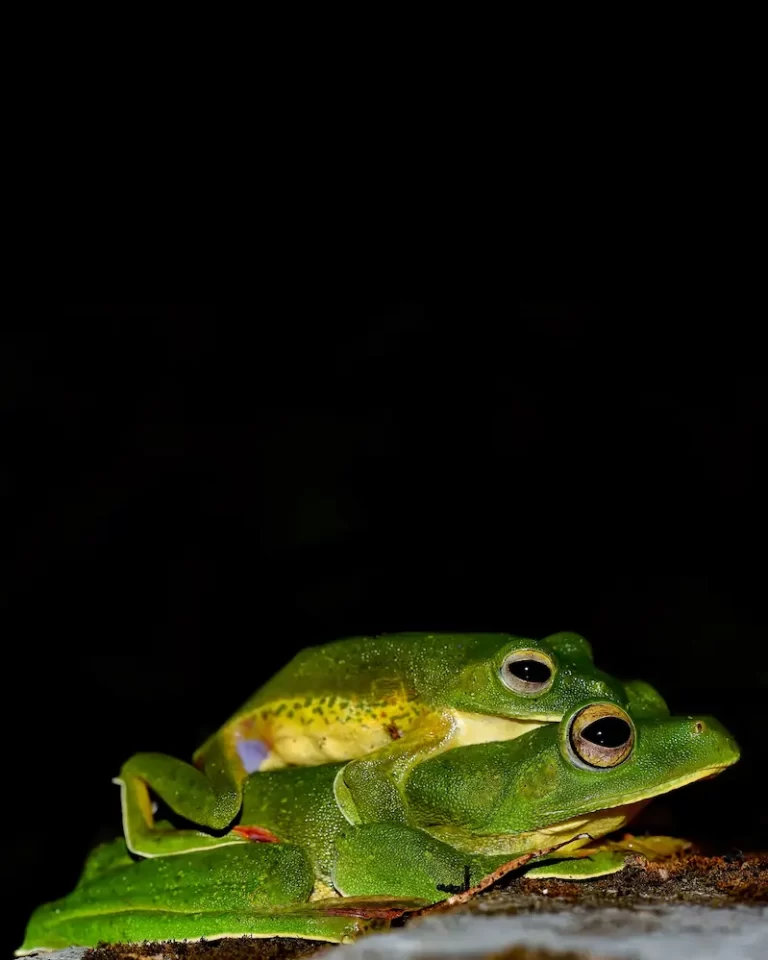
Malabar gliding frog (Rhacophorus malabaricus):
This gorgeously bright green frog has beautiful pink webbings between the toes which enable it to glide between the trees of high canopy. Seen on lower
vegetation or on the ground only during monsoon months when it comes down for breeding. Eggs are laid in a thick foam nestled between foliage hanging over
stagnant water. This foam released by the female provides moisture as well as nutrition to the tadpoles till they slip-off into the water.
Water drop bush frog (Raorchestes nerostagona):
Also known as the Lichen frog because of its ability to disguise being lichen
growing on tree trunk while it is resting during the day. Species of rainforest canopy, this frog is seen on ground only if it falls off with broken branch. Male vocalization sounds like water dripping from a tap hence the name.
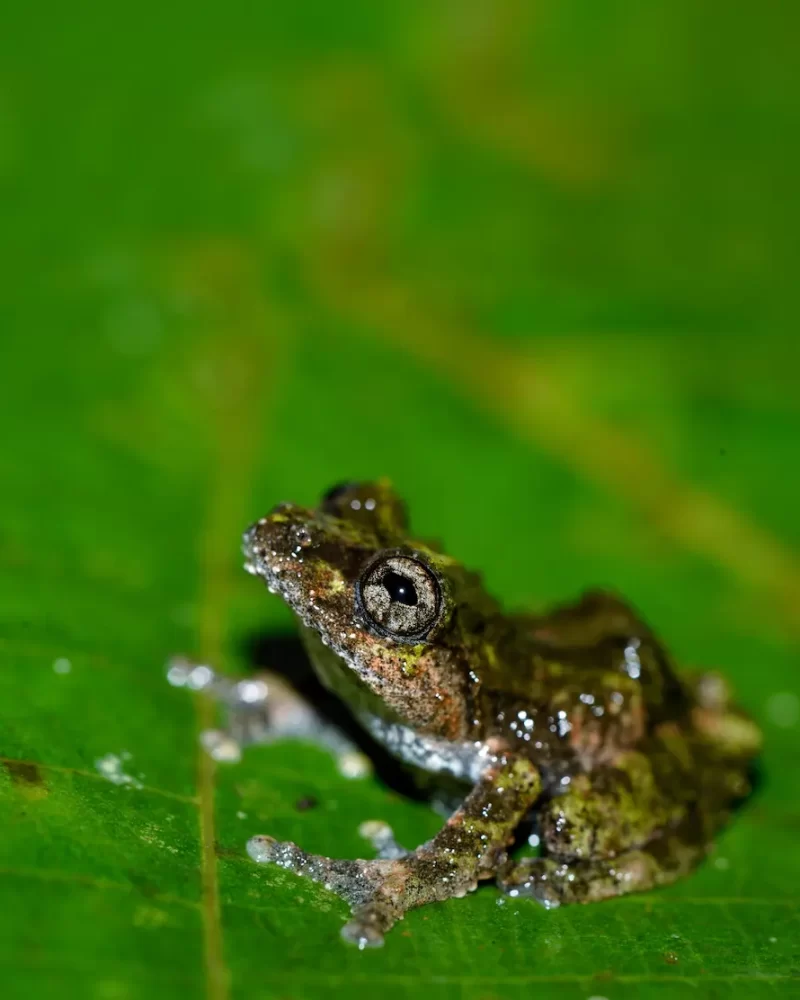
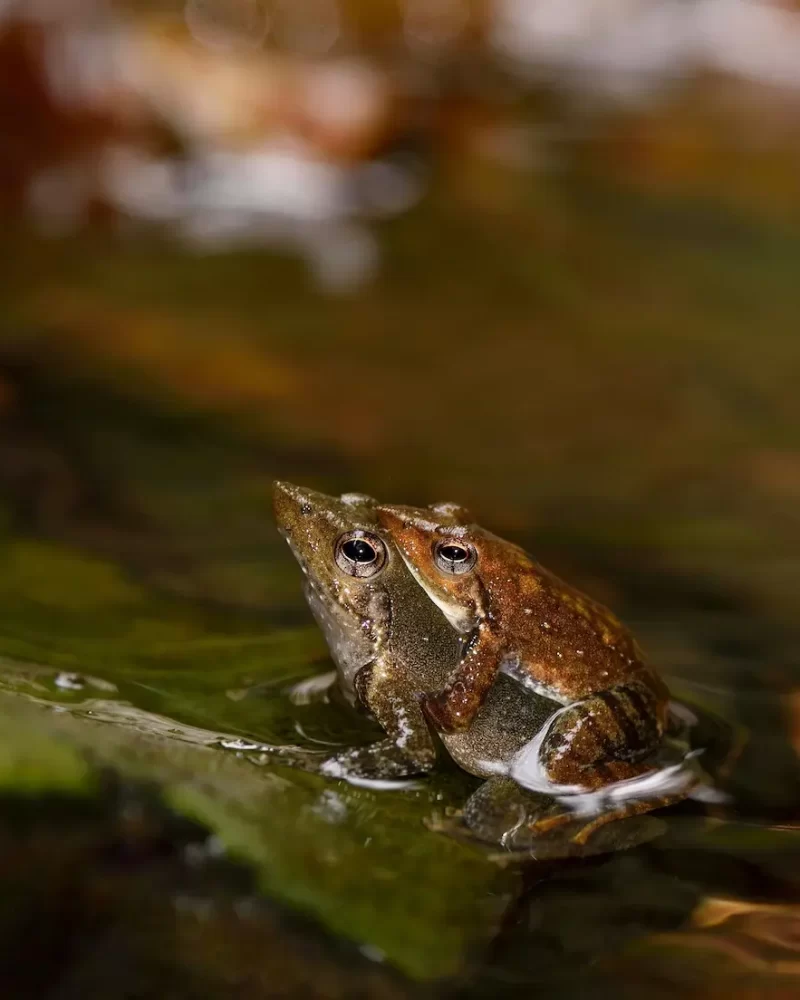
Dancing frog (Micrixalus saxicola):
Creature of hill-stream, this frog lives in the rocky parts where it can hunt insect as well as hide. However, it rarely goes into water. If approached too close, it quickly jumps into water but immediately comes out elsewhere.
Surprisingly the same frog stays underwater for 30 to 50 minutes while in amplexus and has aquatic fossorial larval stage. Living in the noisy torrential stream makes it difficult to communicate vocally; hence this frog has
evolved to communicate through visual signals. Males perform a dance on rock stage which includes thigh tapping, lateral moves and foot flagging to attract the female.
Blue-eyed bush frog (Raorchestes luteolus):
Beating Shankar Mahadevan in breathless singing, male of this tiny species can make 300 notes in a single breath during desperate monsoon nights. Known for the beautiful blue ring on the pupils, finding this frog on rainy night is a treat..
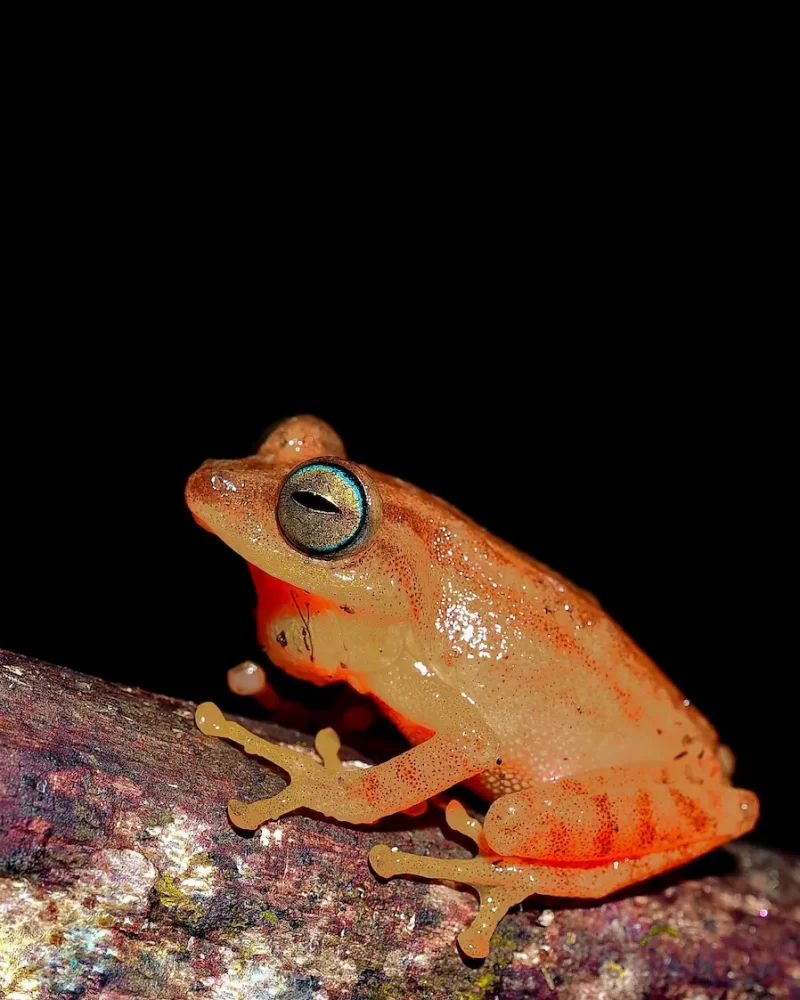
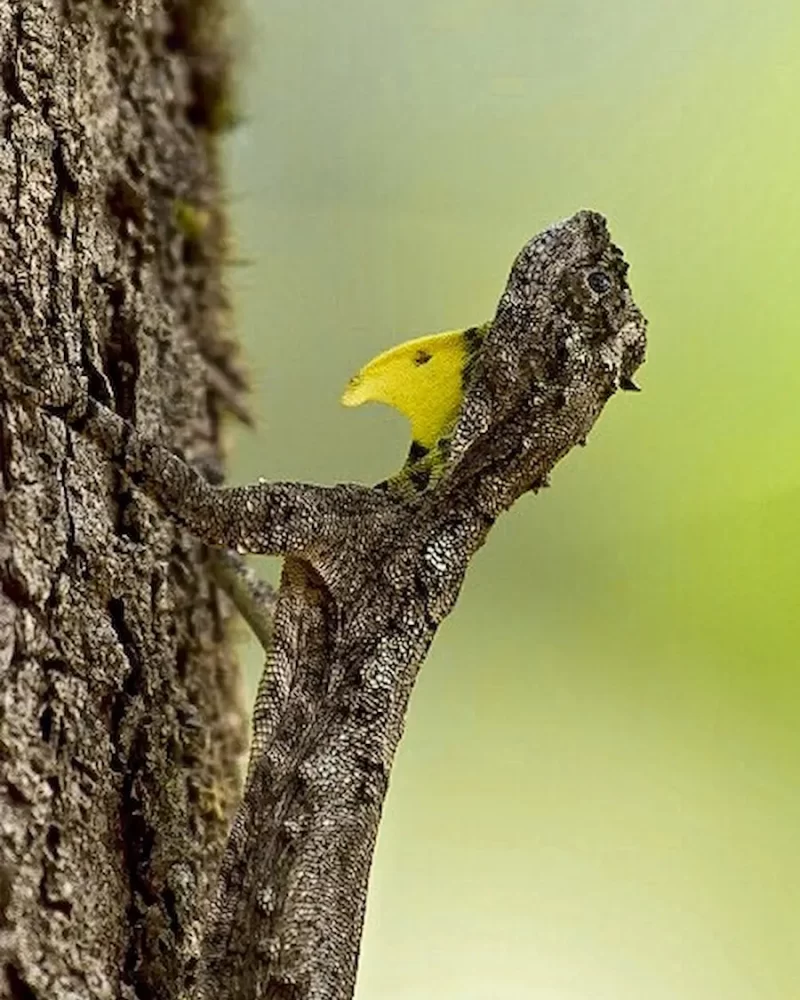
Western Ghats flying lizard (Draco dussumieri):
This miniature dragon is extremely camouflaged and hence difficult to spot unless one patiently waits to notice the flashing of bright greenish yellow
dewlap. Found in the moist evergreen as well as moist deciduous forests with tall canopy, this lizard has evolved with a patagium between limbs, to be able to glide from tree to tree. Watching it glide gracefully is an exciting experience which sometimes tests the limit of your patience.
White-banded ground gecko (Cyrtodactylus albofasciatus):
Bold gecko with smiley face, that raises the body off the ground and walks like an alligator. It’s a treat to observe this gorgeous looking lizard devour its meal as it poses boldly if you keep the light low and patiently wait like the lizard itself does.
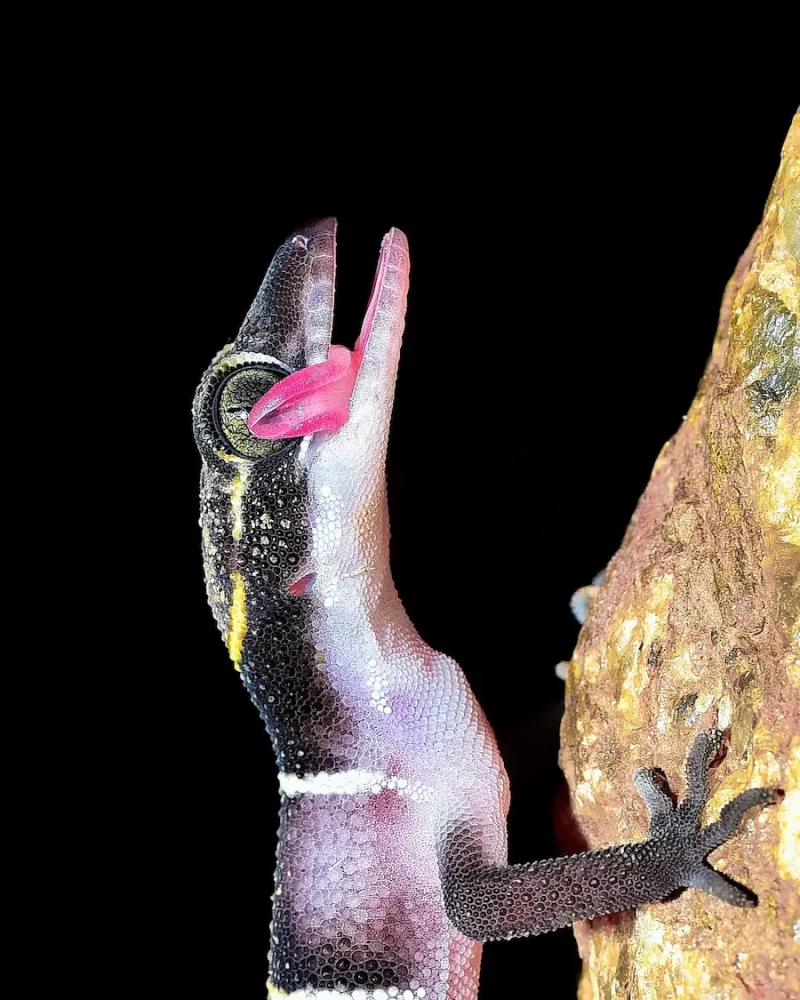
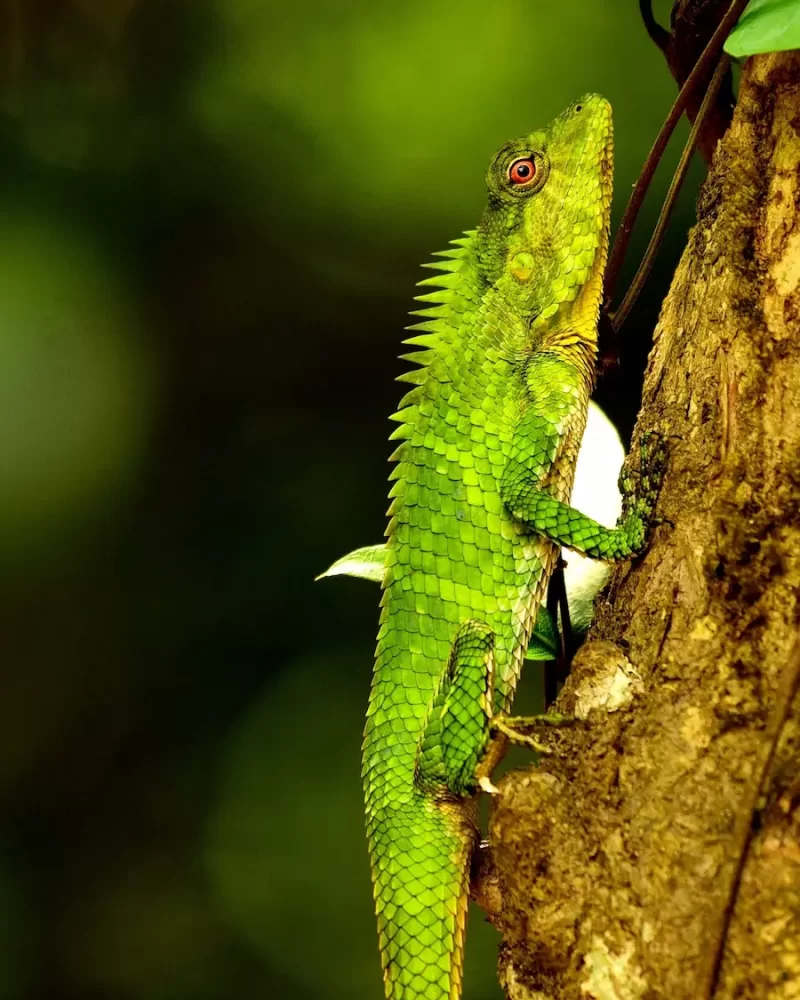
Nilgiri forest lizard (Calotes nemoricola):
This gorgeous Agamid lizard is found in the moist evergreen forests. It blends in perfectly with the green surrounding and makes cautious moves to avoid
detection by the predators.
Malabar pit viper (Craspedocephalus malabaricus):
Jewel of the Western Ghats this beautiful ambush hunter is found in numerous colour morphs varying from shades of green, shades of brown, shades of yellow as well as blue and pink. One of the most common snakes spotted on night walks during monsoon, this peaceful creature can be easily missed as it stays still and blends in perfectly with the surrounding.
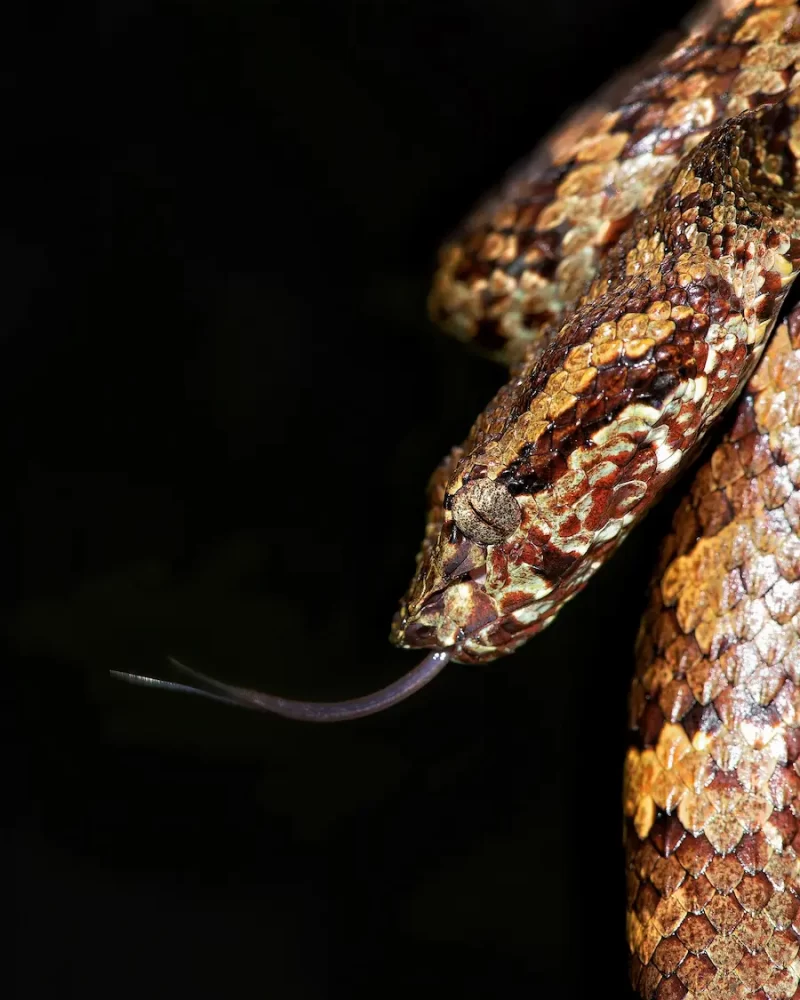
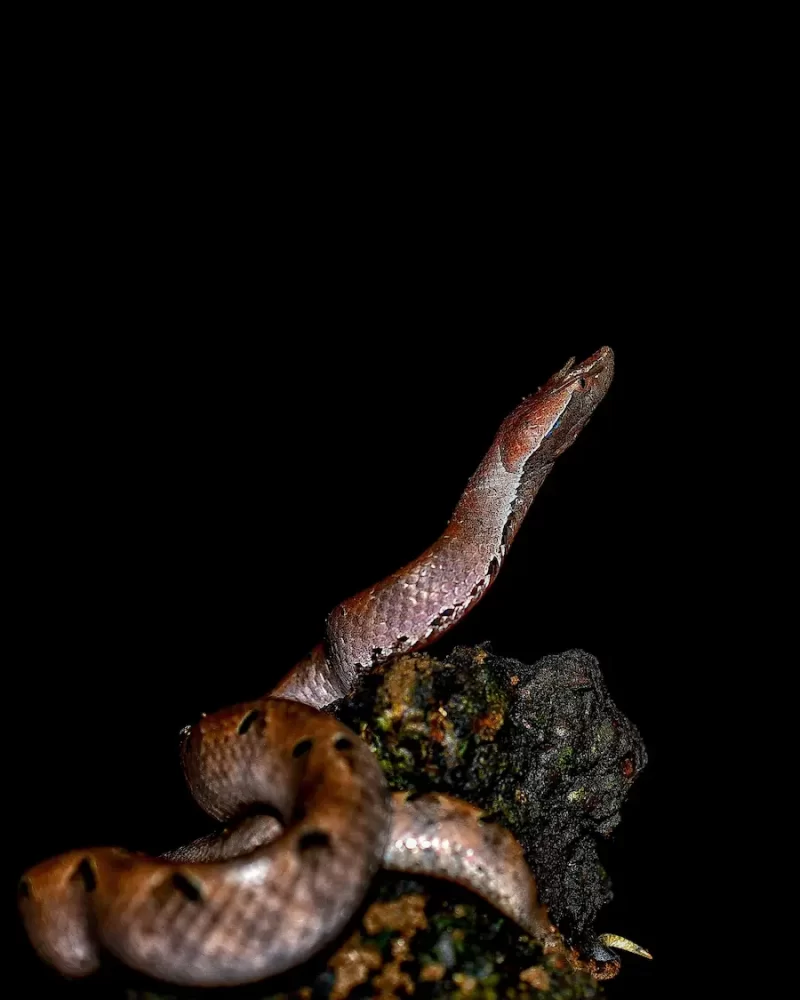
Hump-nosed pit viper (Hypnale hypnale):
Master of camouflage, blending in perfectly with the dry leaf litter on the forest floor, this nocturnal hunter is highly defensive by nature. Vibrates the tail when feels threatened to distract the predators. Juveniles have white tipped tail which they vibrate to attract prey like lizards. Found in Western Ghats of India and Sri Lanka, with surprisingly highest number of snake bite cases reported from this species in the later.
Olive forest snake (Rhabdops olivaceus):
Creature of shallow hill streams, this snake is rare to find unless one puts an effort towards it. Feeds primarily on slug like soft bodied organisms. Nothing much is known about this species as it is rarely seen.
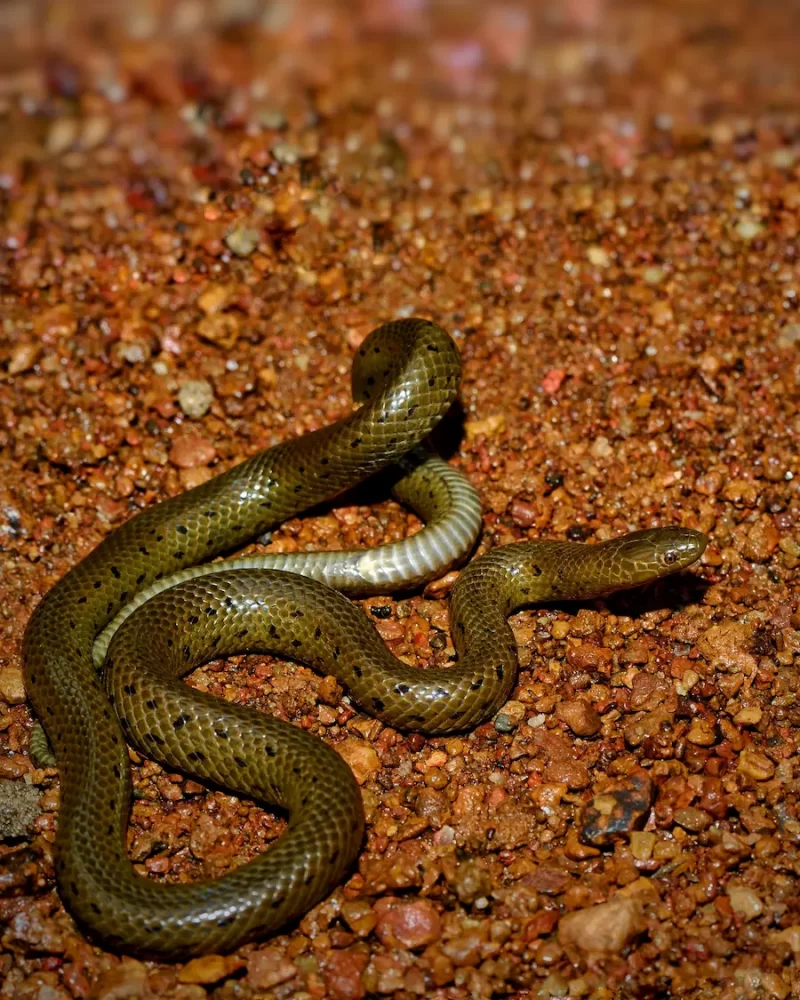
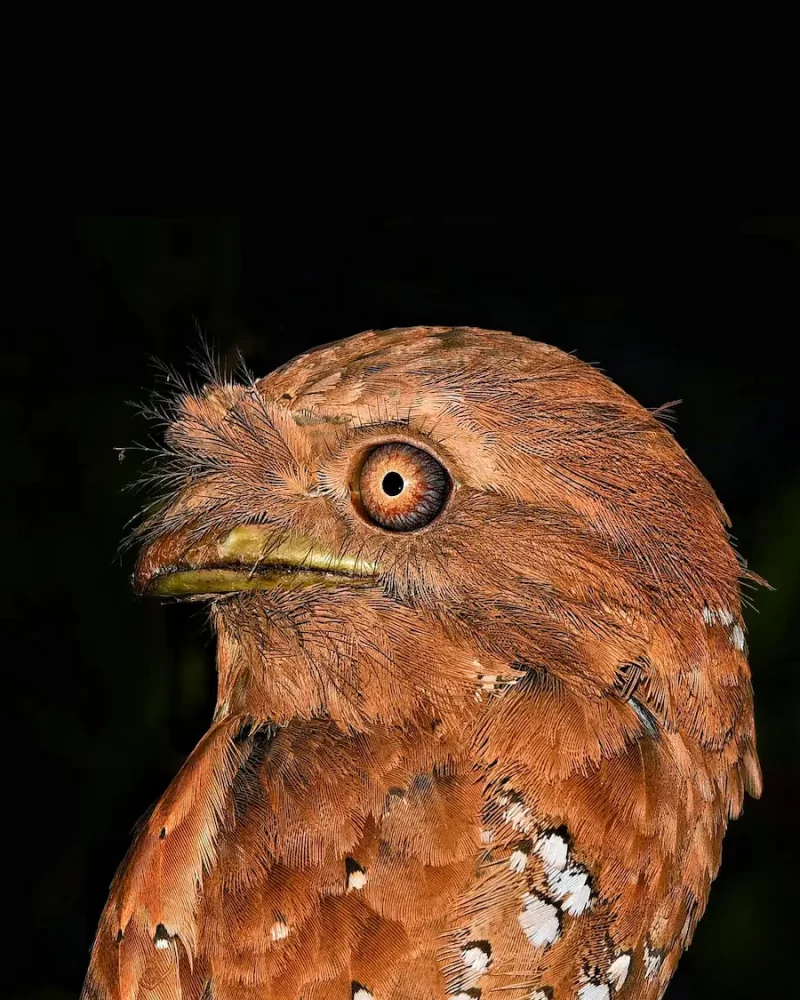
Sri Lanka frogmouth (Batrachostomus moniliger):
This weird looking bird found in the Western Ghats of India and Sri Lanka is an extremely elusive nocturnal creature. This insectivorous bird catches insects in the air in pitch dark night and hence has wide beak and light sensitive eyes. In the day it sleeps on secluded branches under the canopy and to even well- trained eyes appears just like part of the tree.
White-bellied treepie (Dendrocitta leucogastra):
This funny looking bird has an interesting way of calling. It will typically perch on tree top or on open branch of a tall tree where it can be clearly visible from
distance, and bobs whole body while calling. During the breeding season in
summer, several individuals come together on same tree and call continuously as if greeting each other by bowing down.
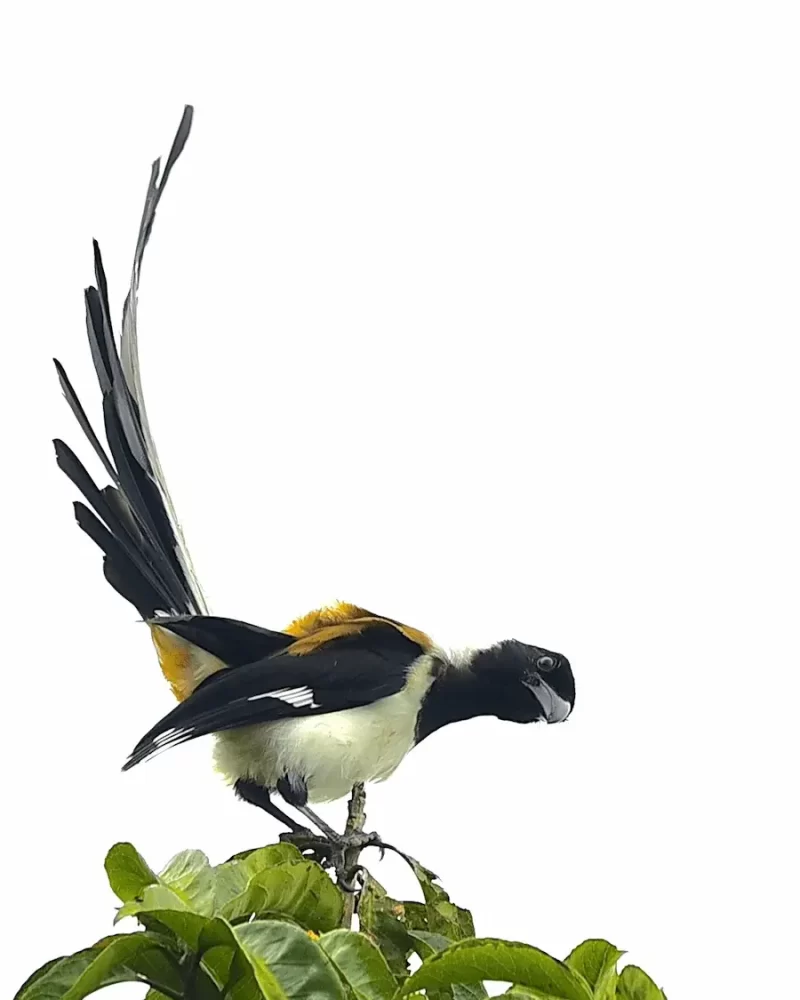
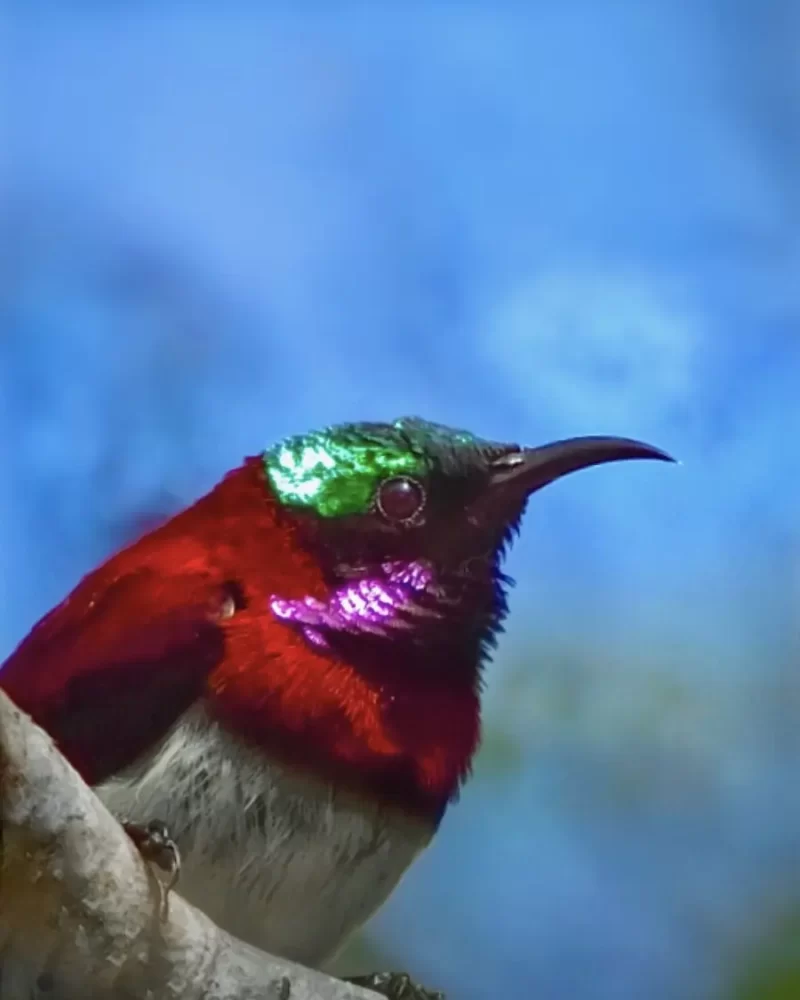
Crimson-backed sunbird (Leptocoma minima):
Growing up to just 8 cm this is the smallest sunbird in India. Primarily nectar feeder; it is seen hovering from flower to flower with its piercing sharp curvy beak. Males have amazingly vibrant metallic colours. Best to observe them during breeding season in winter months when they are most active and most
attractive. Delicate round hanging nest is made on bush typically on the edge of the forest.



